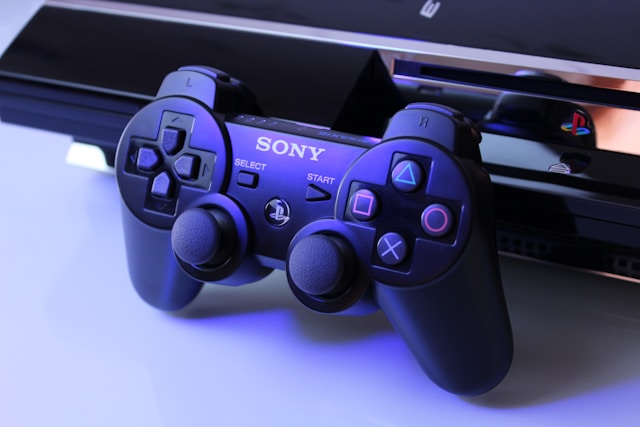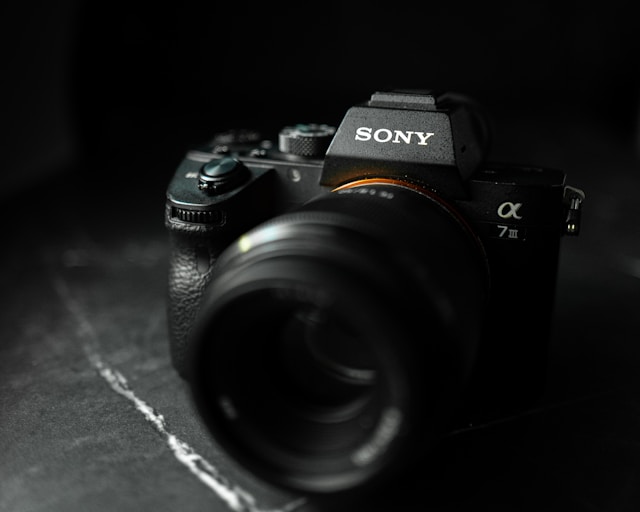From the iconic Walkman to the PlayStation series, Sony has consistently captivated the world with its cutting-edge technology and compelling marketing strategies. For marketing professionals looking for inspiration, Sony’s approach offers a masterclass in blending tradition with innovation, adapting to market changes, and creating a lasting impact.
The Legacy of Innovation
Sony’s journey began in post-war Japan, with founders Masaru Ibuka and Akio Morita envisioning a company that would lead the way in technological innovation. This vision has remained at the core of Sony’s identity, influencing every aspect of its marketing strategy. Understanding Sony’s marketing begins with acknowledging its relentless pursuit of innovation and quality.

Embracing Change
One of Sony’s most remarkable traits is its ability to adapt to changing market dynamics. The company’s marketing strategy reflects this adaptability, consistently aligning with technological advancements and consumer preferences.
Case Study: The Walkman
In the late 1970s, Sony introduced the Walkman, a revolutionary portable cassette player. This product did not just create a new market; it redefined the way people consumed music. Sony’s marketing strategy for the Walkman focused on the freedom and personal experience it offered. The campaigns depicted people enjoying music while jogging, walking, or simply relaxing, highlighting a lifestyle that resonated with a generation seeking mobility and individuality.
This approach was not just about selling a product; it was about selling an experience. The Walkman became a cultural phenomenon, and Sony’s marketing played a crucial role in this transformation. By understanding and anticipating consumer needs, Sony was able to position the Walkman as an essential part of everyday life.
Leveraging Brand Equity
Sony has always maintained a strong brand equity, which it leverages across various product lines. This brand equity is built on a foundation of trust and reliability, attributes that are consistently highlighted in their marketing campaigns.

Case Study: PlayStation
When Sony entered the gaming market with the PlayStation in 1994, it faced stiff competition from established players like Nintendo and Sega. However, Sony’s marketing strategy was clear and compelling. The PlayStation was marketed not just as a gaming console but as an entertainment system that offered superior graphics, a vast library of games, and a user-friendly experience.
Sony’s campaigns focused on the immersive experience and the advanced technology that the PlayStation offered. Slogans like “Live in Your World, Play in Ours” captured the imagination of gamers and established a strong emotional connection with the audience. By consistently delivering on its promise of quality and innovation, Sony built a loyal customer base that continues to grow with each new iteration of the PlayStation.
Strategic Partnerships
Sony’s marketing strategy also includes forming strategic partnerships that enhance its brand and expand its reach. These partnerships are carefully chosen to align with Sony’s brand values and target audience.
Case Study: Spider-Man and Marvel Collaboration
One of Sony’s most successful partnerships has been with Marvel Studios. The collaboration on the Spider-Man film franchise has not only been a commercial success but also a marketing triumph. By integrating Spider-Man into the Marvel Cinematic Universe, Sony tapped into a massive fan base and generated enormous buzz around the films.
The marketing campaigns for the Spider-Man movies have been comprehensive, spanning traditional media, digital platforms, and experiential marketing. From teaser trailers that go viral to immersive fan experiences at comic conventions, Sony’s collaboration with Marvel exemplifies how strategic partnerships can amplify marketing efforts and create a broader impact.
Digital Transformation
In the digital age, Sony has adeptly embraced digital marketing strategies to stay relevant and engage with a tech-savvy audience. The company’s digital marketing initiatives are characterized by their creativity, interactivity, and focus on consumer engagement.
Case Study: Sony Xperia and Social Media Engagement
Sony’s Xperia line of smartphones faced tough competition in a market dominated by Apple and Samsung. To differentiate itself, Sony focused on the superior camera capabilities of the Xperia phones. The marketing campaigns emphasized high-quality photography and videography, appealing to a niche market of photo enthusiasts and content creators.
Social media played a crucial role in this strategy. Sony launched several campaigns encouraging users to share their best photos taken with Xperia phones, using hashtags like #XperiaChallenge. These user-generated content campaigns not only increased engagement but also showcased the product’s capabilities through real-life examples. Influencer partnerships further amplified the message, reaching wider audiences and building a community around the Xperia brand.
Emotional Connection and Storytelling
Sony’s marketing strategy often revolves around creating an emotional connection with its audience. By telling compelling stories that resonate on a personal level, Sony has been able to build strong emotional bonds with its consumers.

Case Study: Make.Believe Campaign
The Make.Believe campaign is a quintessential example of Sony’s storytelling prowess. Launched in 2009, the campaign unified Sony’s diverse product lines under a single brand message: the power of imagination. The slogan “Believe that anything you can imagine, you can make real” encapsulated the essence of Sony’s brand philosophy.
The campaign featured inspiring stories of real people using Sony products to achieve their dreams, from musicians and filmmakers to gamers and tech enthusiasts. By focusing on the personal achievements made possible by Sony’s technology, the Make.Believe campaign created a powerful emotional narrative that resonated across different demographics and cultures.
Innovation in Advertising
Sony has consistently pushed the boundaries of advertising by embracing new technologies and creative concepts. From interactive billboards to augmented reality experiences, Sony’s advertising campaigns are known for their innovation and impact.
Case Study: PlayStation’s “Greatness Awaits” Campaign
The “Greatness Awaits” campaign for PlayStation 4 is a standout example of innovative advertising. Launched in 2013, the campaign featured a cinematic trailer that invited gamers to imagine themselves in a world where their greatest gaming moments could come to life. The tagline “Greatness Awaits” was both a call to action and a promise of extraordinary experiences.
Sony extended the campaign beyond traditional advertising, incorporating interactive elements like a scavenger hunt where players could find hidden “Easter eggs” in the trailer and unlock rewards. This gamification of the marketing campaign not only engaged the audience but also created a sense of community and excitement around the PlayStation 4 launch.
Adapting to Market Trends
Sony’s ability to adapt to market trends is evident in its marketing strategies. Whether it’s leveraging the latest digital marketing tools or tapping into cultural trends, Sony stays ahead by remaining flexible and forward-thinking.
Case Study: Sony Music and Streaming Platforms
The rise of streaming platforms revolutionized the music industry, and Sony Music was quick to adapt. Recognizing the shift in how people consumed music, Sony Music embraced platforms like Spotify, Apple Music, and YouTube to reach audiences globally. The marketing strategy focused on digital promotions, playlists, and collaborations with popular artists to stay relevant in the streaming era.
Sony Music’s digital campaigns often feature exclusive content, behind-the-scenes videos, and interactive social media posts that engage fans and promote new releases. By understanding and adapting to the changing landscape of music consumption, Sony Music has maintained its position as a leader in the industry.
Lessons from Sony’s Marketing Strategy
Sony’s marketing strategy is a rich tapestry of innovation, adaptability, and emotional connection. By consistently delivering on its promise of quality and leveraging its brand equity, Sony has created a lasting impact in the market. The company’s ability to embrace change, form strategic partnerships, and engage with its audience through compelling storytelling and digital initiatives provides valuable lessons for marketing professionals.
For those looking to be inspired by success stories, Sony’s marketing approach offers a blueprint for how to build a brand that resonates with consumers and stands the test of time. By staying true to its core values while continuously evolving with the market, Sony exemplifies the power of a well-crafted marketing strategy.
Here are five key takeaways:
1. Embrace Innovation
Sony’s success is rooted in its commitment to innovation. Whether it’s the introduction of the Walkman or the continual advancements in the PlayStation series, Sony has consistently pushed the boundaries of what is possible. Marketers can learn to adopt a similar approach by constantly seeking new ways to differentiate their products and stay ahead of the competition.
Example: The Walkman was more than just a product; it was a revolutionary way of listening to music. Sony’s marketing campaign focused on the freedom and personal experience it offered, creating a new cultural phenomenon.
2. Adapt to Market Changes
Sony has shown remarkable flexibility in adapting to changing market dynamics. By staying attuned to shifts in consumer behavior and technological advancements, Sony has managed to remain relevant in various industries.
Example: Sony Music’s adaptation to the rise of streaming platforms is a perfect illustration of this. By embracing Spotify, Apple Music, and YouTube, Sony Music ensured it stayed connected with audiences who had moved away from traditional music consumption methods.
3. Leverage Brand Equity
Sony effectively uses its strong brand equity to bolster its marketing efforts across different product lines. A solid brand foundation built on trust and quality can significantly enhance marketing campaigns.
Example: The PlayStation brand is synonymous with quality gaming experiences. Sony leverages this strong brand identity to market each new iteration, ensuring that consumers associate the product with the high standards set by its predecessors.
4. Create Emotional Connections through Storytelling
One of Sony’s most powerful tools is its ability to connect with consumers on an emotional level through compelling storytelling. This approach helps in building a loyal customer base and enhancing brand affinity.
Example: The Make.Believe campaign unified Sony’s diverse products under a single message about the power of imagination. By showcasing real stories of people using Sony products to achieve their dreams, the campaign resonated deeply with audiences on a personal level.
5. Innovative Advertising and Engagement
Sony is known for its creative advertising and engagement strategies. From interactive billboards to gamified marketing campaigns, Sony’s innovative approach captures the attention of its target audience and fosters engagement.
Example: The “Greatness Awaits” campaign for PlayStation 4 included an interactive scavenger hunt that encouraged players to find hidden elements in the promotional trailer. This gamification strategy not only engaged the audience but also created a sense of excitement and community around the product launch.

